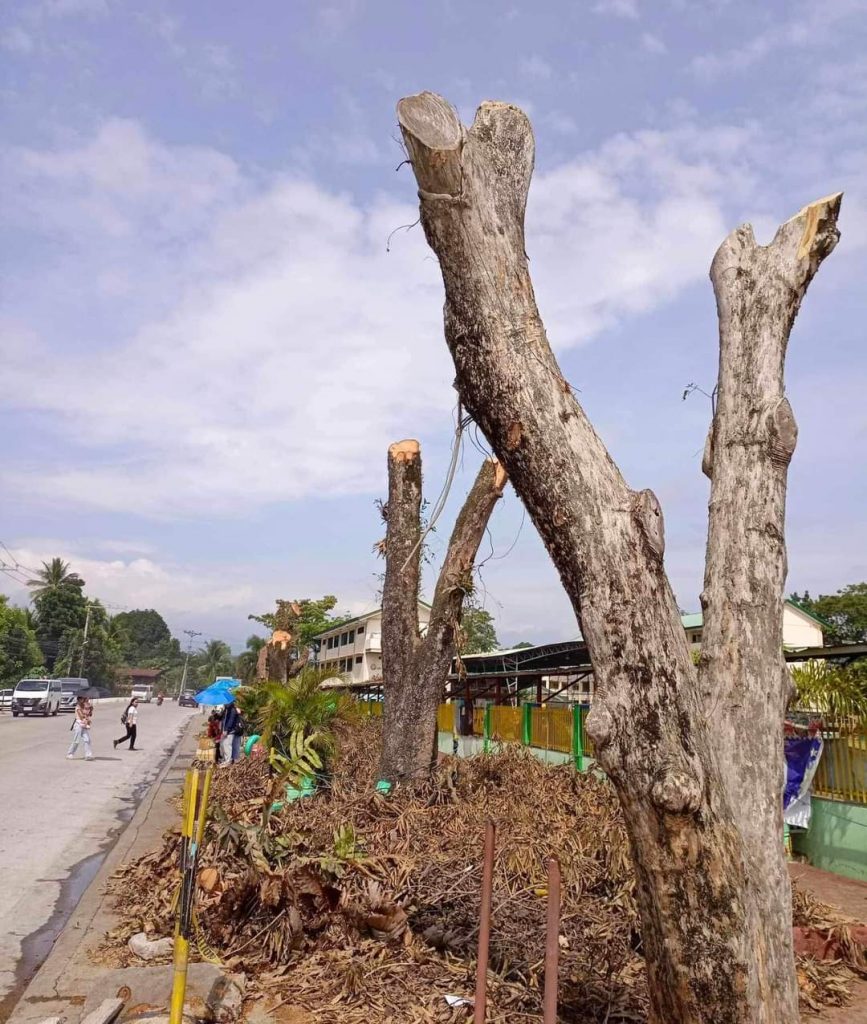
ENVIRONMENTAL group Interfacing Development Interventions for Sustainability (IDIS) expressed disappointment over the recent topping of 18 trees in Mintal Elementary School.
The pruning of the trees was due to its possible risk to the public as some have become hazardous due to their infected branches.
However, the group stressed the tree-topping method, which was conducted is the “worst type of pruning.”
“Tree-topping is an arboricultural practice that involves the severe cutting back of a tree’s crown by cutting and removing most of its main branches. However, many arborists and foresters consider it as an improper and harmful way of pruning,” IDIS said.
IDIS cited studies that showed that this method reduces the ability of the tree to do photosynthesis and carbon sequestration. It added that topped trees become susceptible to pests and diseases due to the xylem exposed from openly cutting the branches.
Tree-topping also weakens the root and trunk structures of trees, according to the study of Mattheck and Breloer.
It was found the school applied for a permit to prune/trim and was granted by the Davao City Department of Environment and Natural Resources Office – Community Environment and Natural Resources Office (DENR-Community ENRO).
The Department of Public Works and Highways Davao City 2nd District Engineering Office- Tugbok was requested to execute the said pruning/trimming, which was witnessed by the staff from the DENR-Community ENRO.
IDIS assessment showed that a few trees were found to have minor fungal and termite infestation, and one Mango tree has a damaged trunk due to vendors burning wastes next to it.
“These were curable through proper pruning techniques such as “Tree Crown trimming/thinning” or “Selective Branch Removal” and are proven to have better results in maintaining and sustaining tree growth,” IDIS said.
The group emphasized the act did not only violate the local Heritage Tree Ordinance but potentially contravened Department Order No. 93 Series of 2014 from the DPWH which provides the guidelines and procedures for the proper pruning/trimming and/or cutting of trees, which only recommends crown thinning and crown raising.
The DPWH guidelines clearly stated that the crown shall remain and not be totally removed.
Additionally, Republic Act No. 3571, known as An Act to Prohibit the Cutting, Destroying or Injuring of Planted or Growing Trees, Flowering Plants, and Shrubs or Plants of Scenic Value along Public Roads, in Plazas, Parks, School Premises, or any other Public Grounds specifically prohibits the “cutting, destroying, or injuring of planted or growing trees” in public spaces like plazas, parks, and school grounds.
The law provides the guidelines to “conserve and protect trees, recognizing their vital role in maintaining a cool, fresh, and healthful climate, as well as enhancing the beauty of public areas.”
IDIS calls for the urgent need for the strict implementation of the Trees Protection Ordinance of the city and expedite the development of the Implementing Rules and Regulations (IRR) of the ordinance to ensure the effective protection of heritage trees.
The CENRO is also called to review and amend its guidelines for tree pruning and implement stringent monitoring of the permits they issue to ensure that applicants strictly adhere to proper practices.
IDIS also requested the Department of Education to educate contractors working on school grounds on the significance of proper tree care and the potential negative consequences of tree topping.
“Safeguarding these heritage trees is essential for preserving both environmental integrity and community identity,” it said.
IDIS stressed that trees are crucial in mitigating urban heat island effects, especially with the city recording a heat index of 42.4℃ on Sunday, Sept. 30.
Photo courtesy of IDIS
